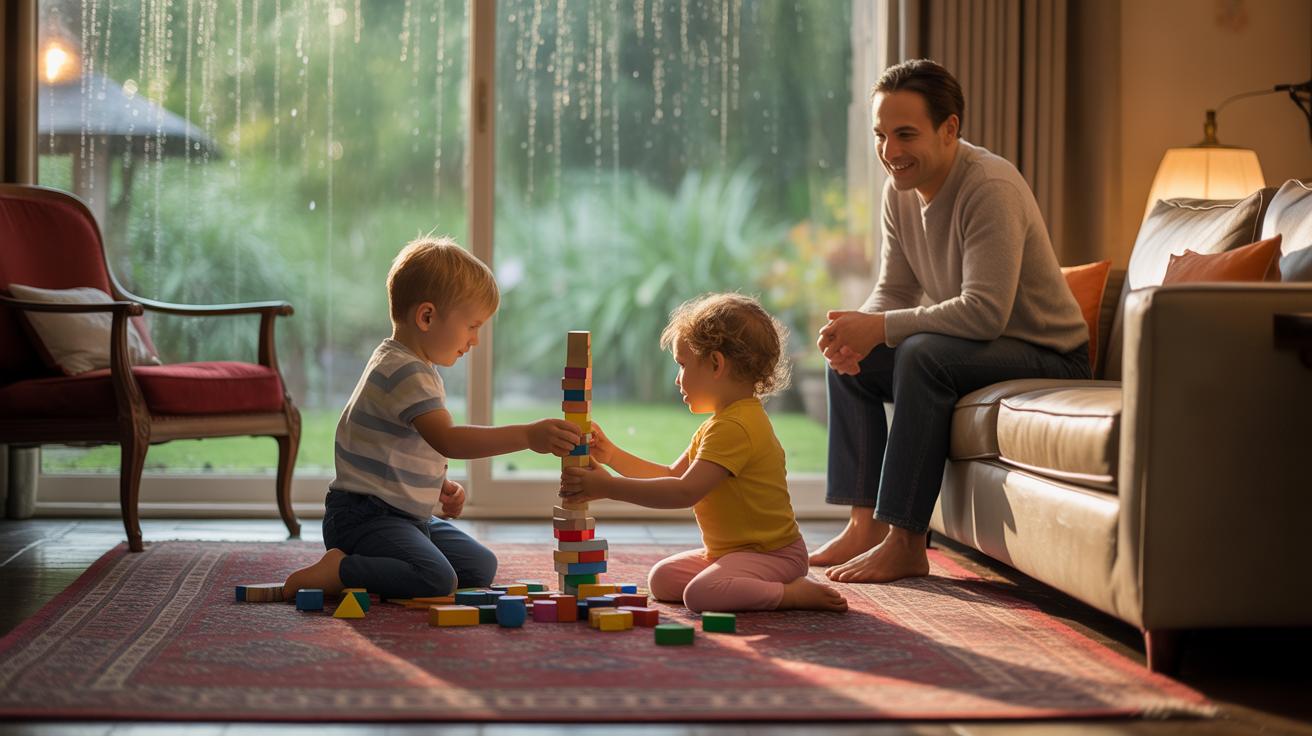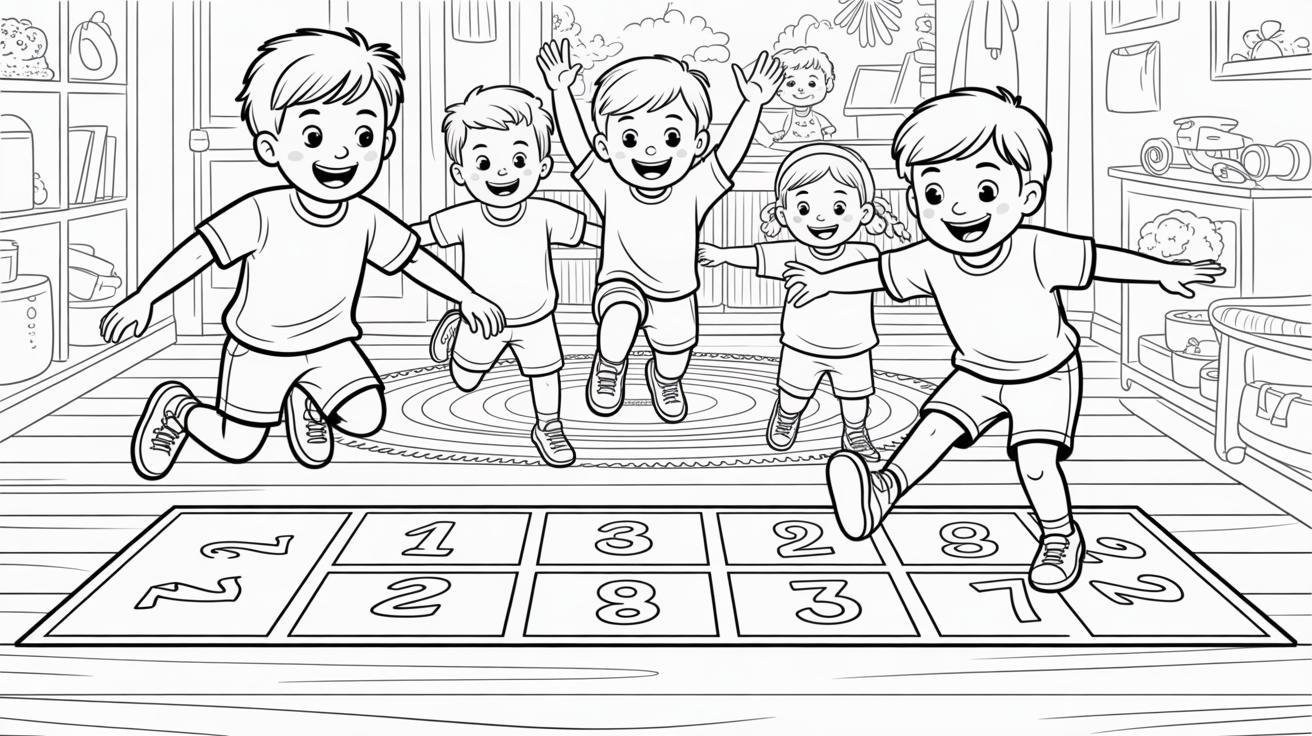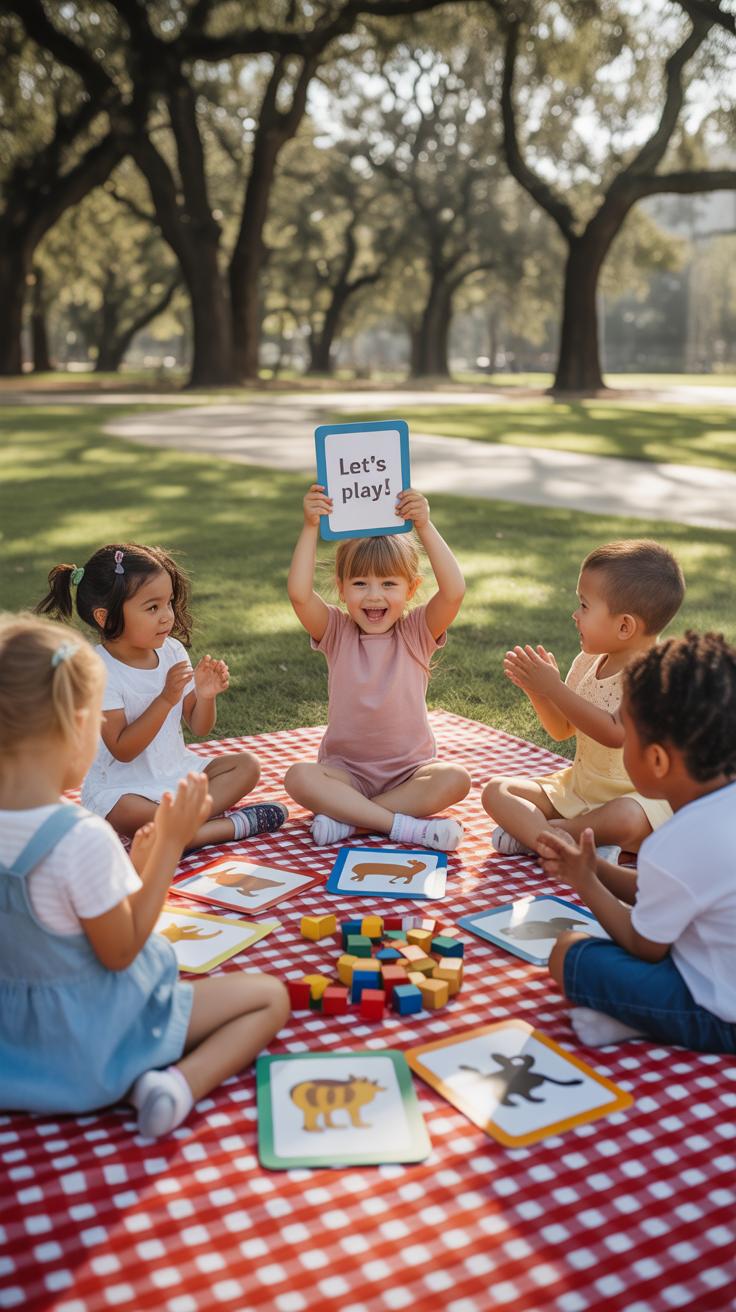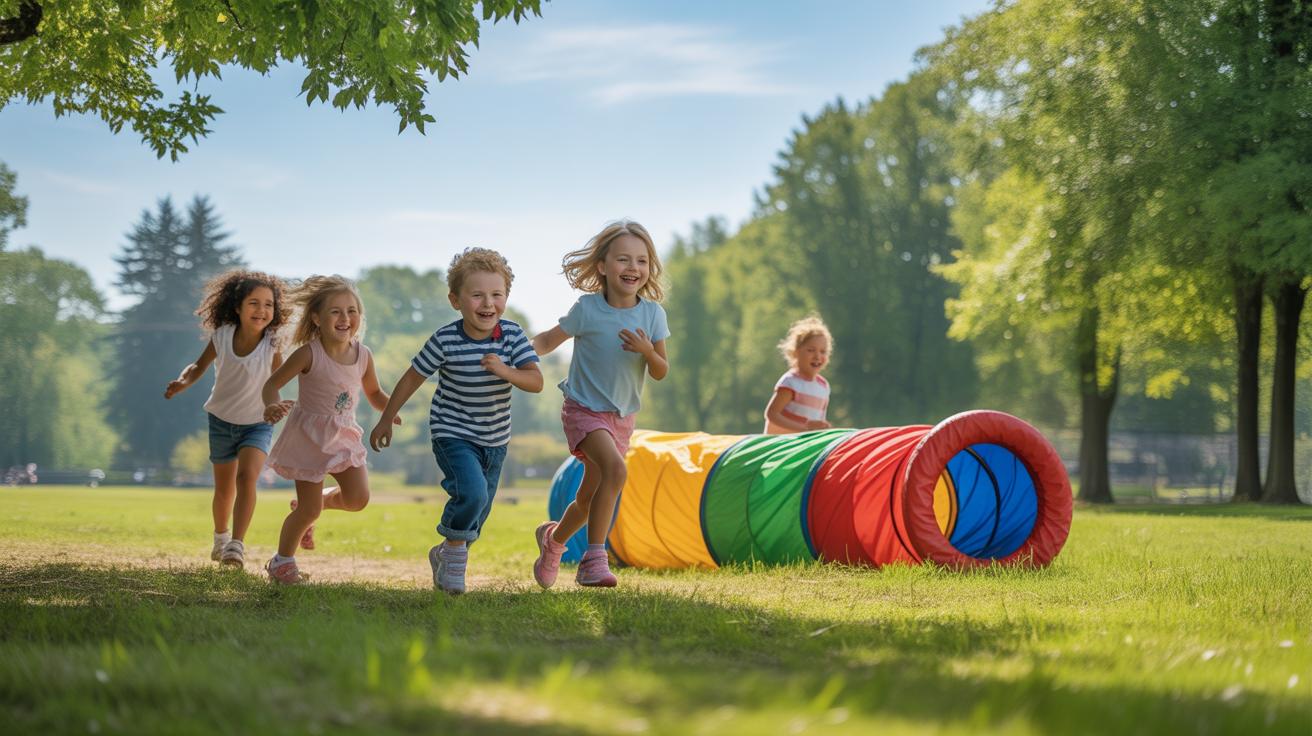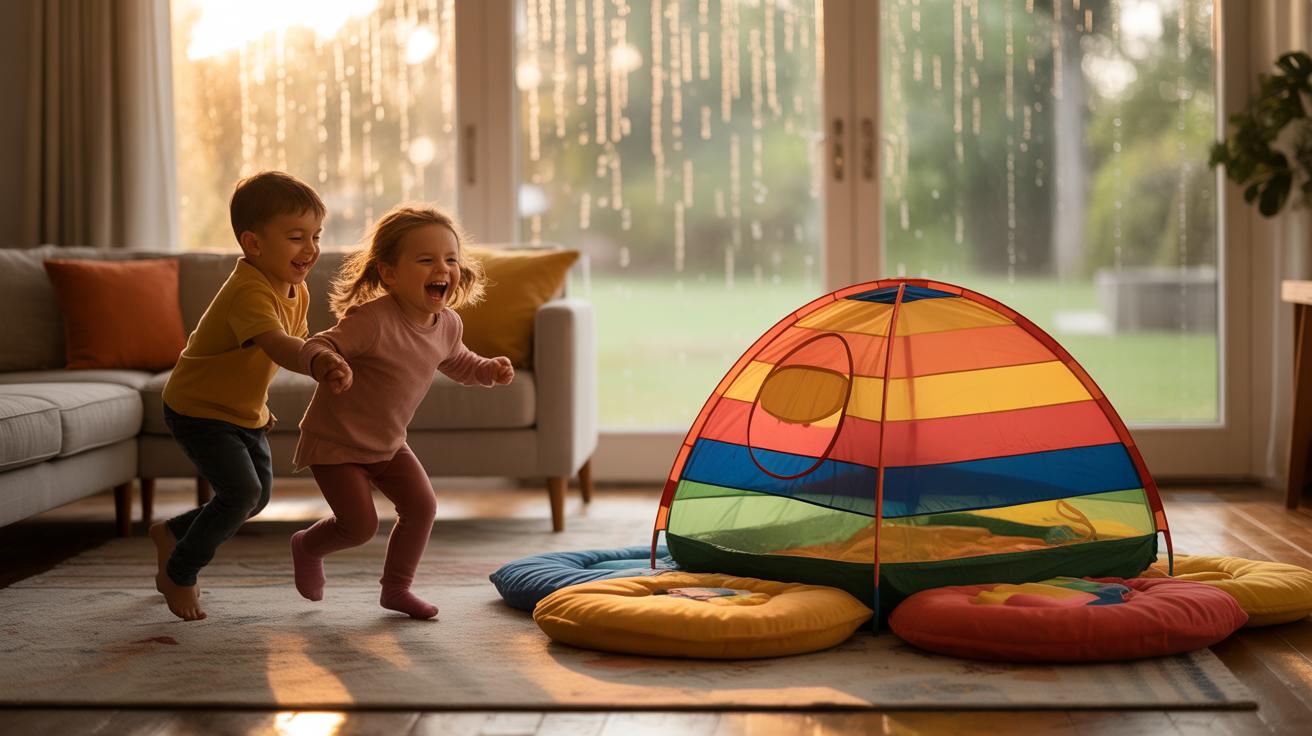Introduction
Playing games is a fun way for kids to enjoy their time, learn new skills, and spend quality moments with family and friends. Fun games for kids that everyone will love playing together offer a chance for children to be active, creative, and social. These games can happen indoors or outdoors and often need little to no equipment.
Whether it’s a classic like hide-and-seek or a new twist on a jumping game, these activities help kids develop physically and mentally. This article explores different types of enjoyable games that suit a variety of settings and ages. You’ll find ideas that are easy to set up and fun to play.
Classic Tag Games
Tag games have been a staple of childhood play for generations. At their core, these games involve one or more players chasing others around, trying to “tag” them by touching. Simple, right? But they pack a lot into that small idea.
Take regular tag, for example. One player is “it” and tries to catch someone else. When they do, that person becomes “it.” It’s quick, straightforward, and always gets kids moving. Then there’s freeze tag, where tagged players must freeze in place until a teammate unfreezes them. This adds a whole new layer of teamwork to what seems like just running around.
What’s really interesting is how these games push kids to think on their feet. You plan your moves, watch for openings, maybe team up with friends. You switch from sprinting to strategizing in seconds. It’s not just running; it’s reacting, cooperating, and sometimes negotiating how the game flows.
The rules are easy to explain, which probably explains why tag games never get old. Kids can pick them up quickly and jump right in without much fuss. That simplicity means more time playing, less time figuring out how. Sometimes, I wonder if it’s the rules being simple or the thrill of chasing that keeps everyone hooked.
Besides being great exercise, tag games cultivate social skills. You learn to read people, judge distances, and even handle losing or winning calmly. So next time you see kids dashing around, remember there’s more going on than just fun—they’re getting smarter and healthier along the way.
HideandSeek and Its Variations
Hide-and-seek has been around for ages—really, it’s one of those timeless games that crosses generations and cultures. The basic idea is simple: one person counts while everyone else hides. Then the seeker tries to find the hidden players. But what makes it interesting is how it encourages kids to think creatively about where they can hide, and how patiently they can wait to avoid being found. It’s a quiet kind of fun that feels different from something like tag, though both get everyone moving.
Playing hide-and-seek is easy. Here’s how you can teach it:
- Choose one player as the seeker.
- The seeker closes their eyes and counts loudly to a pre-agreed number (like 20 or 30) in a designated spot, often called “home base.”
- While counting, the other players find hiding spots.
- Once counting is done, the seeker calls “ready or not, here I come,” and starts looking for players.
- When the seeker spots someone, they usually try to tag them or call their name to confirm. Caught players either join the seeker to help find others or are out, depending on the rules you prefer.
- The first person found becomes the next seeker, or if all are found, the game resets.
There are cool twists too. Ever heard of Sardines? It’s basically hide-and-seek flipped inside out. One person hides while everyone else counts. Then, instead of running off when found, players squeeze into the same hiding spot silently. This can be hilarious as more people cram into small places. Sardines teaches teamwork and patience, as everyone works together to stay hidden. The quiet closeness somehow makes the game feel cozier and connects kids in a different way.
Choosing creative hiding spots is part of the challenge—and fun. Kids might hide behind curtains, under tables, or in closets. Sometimes, they think outside the box and hide in plain sight, blending with the environment. It’s fascinating how much effort kids put into hiding, and how the anticipation of being found builds suspense. That blend of creativity and patience feels like a quiet kind of teamwork you don’t always see in more energetic games.
Jumping and Hopping Games
Games like hopscotch, double Dutch, and leapfrog have been favorite pastimes for many children. Hopscotch is simple: you draw numbered squares on the ground and toss a marker, then hop through the pattern without losing balance. Double Dutch involves two long ropes turning in opposite directions while kids jump in and out, timing their moves perfectly. Leapfrog is more playful—one child bends down while another jumps over their back, taking turns in a chain.
What makes these games more than just fun is how they challenge balance and coordination. Jumping and hopping boost children’s motor skills in subtle ways. Just watching kids try to stay steady on one foot in hopscotch made me realize how much concentration it demands. It’s not just physical movement; it’s about timing, sighting, and control, too.
Another plus? Setting these games up is pretty easy. You only need chalk and some open space for hopscotch. Double Dutch ropes can even be made from old jump ropes. Leapfrog needs nothing more than willing players. Indoors or outside, these games fit well almost anywhere, which explains why they keep showing up in playgrounds and living rooms alike. Have you noticed how jumping and hopping make kids lose track of time completely?
Memory and Listening Games
Games like Concentration, I Spy, and Chinese Whispers are simple yet powerful tools for sharpening a child’s memory and listening skills. Concentration, where players flip cards to find matching pairs, nudges kids to remember locations and patterns. I Spy encourages paying close attention to details, prompting players to listen carefully and observe their surroundings. Chinese Whispers, or Telephone, tests how well children can hear, recall, and repeat a message, often leading to funny and surprising outcomes.
These games do more than pass the time—they stretch a child’s attention span and reinforce their ability to process information carefully. Playing these regularly can subtly nurture brain skills that support learning, like focus and recall. It’s curious how children might forget a detail one moment but nail it the next, revealing how memory isn’t always steady but definitely trainable.
One of the best parts? You can play these games almost anywhere—on car rides, during waiting times, or while stuck indoors. They require nothing but a bit of creativity and, sometimes, a deck of cards or just your voice. The low setup means you can jump into play instantly, which makes them perfect when you want to keep kids engaged without fuss.
Parlour and Indoor Games
Games like Wink Murder, Truth or Dare, and Hunt the Thimble have a way of pulling kids together in the coziest corners of the house. These parlour games aren’t just time-fillers; they naturally get children talking, laughing, and somehow thinking on their feet. Wink Murder, for example, taps into subtle communication and quick reactions. Someone “dies” with a wink, and the others have to spot who it is before too long. It’s sly, fun, and encourages sharp observation skills.
With Truth or Dare, kids get a chance to share surprising tidbits or perform silly challenges. It wakes up their imagination and sometimes lets shy personalities come out in interesting ways. Hunt the Thimble has a quiet charm, stirring curiosity and group focus as kids guess where the tiny object disappears. There’s an old-fashioned simplicity to these games, yet they spark lively interaction, which is quite a balance.
Engaging storytelling and role play
What really stands out about these games is how much they encourage kids to create stories and slip into roles, sometimes without even aiming to. Wink Murder asks for a bit of stealth and acting—pretending not to notice the “murder” wink or trying to appear innocent. Truth or Dare pushes kids to invent stories for the truths they share or imagine thrilling dares that test their creativity. Role play here isn’t formal but natural. It asks children to react, improvise, and engage their imagination, which is different from sitting quietly and listening to a story.
Games for rainy days
It’s easy to see why these are perfect for when the rain keeps everyone inside. They require minimal setup and no special equipment, meaning kids can dive in with just a few friends and a little space. When outdoor adventures have to pause, these games fill the gap. They keep the energy up without the need to turn on screens or drift into boredom. Maybe these old-school parlour games are still some of the best ways to bring a group together when the weather has other plans.
Outdoor Team Sports for Kids
Team sports like soccer, relay races, and simple tag-team games work really well for kids. They don’t need much gear—just a ball, some open space, and a few friends ready to run around. These games keep kids moving but also get them thinking about playing together. Suddenly, scoring a goal or passing the baton isn’t just about winning. It’s about helping your teammates and making sure everyone gets a turn.
Playing such games often brings moments of laughter, a little frustration now and then, but mostly teamwork. Kids learn how to cooperate, share, and push each other to do better—sometimes in surprising ways. Even if rules slip away a bit, the spirit of fair play usually sticks around.
Learning fair play and cooperation
In team sports, kids often face choices that are about more than the game itself. Should they let a younger player try being goalie, even if it makes winning harder? How to handle losing without tantrums? These little situations quietly teach fairness and respect.
There’s also the problem-solving side: if one player’s having a bad day, teammates figure out ways to support rather than blame. This kind of cooperation isn’t always perfect, sometimes kids argue or feel left out, but the lessons stick over time. It’s part of growing up through play.
Easy rules for young players
To keep it fun and inclusive, rules should be simple. For soccer, maybe just focus on passing and scoring without offside complexities. In relay races, swap standard baton passes for touch tags to reduce fumbling. Tag-team games can have basic “safe zones” where players catch their breath.
- Keep teams small—three to five is usually good.
- Short game times prevent energy dips and crankiness.
- Switch roles often so everyone gets a chance at different skills.
When rules aren’t too strict, kids feel freer to join in and less worried about making mistakes. This relaxed approach helps the fun carry on longer, and builds confidence with each round of play. Isn’t that really what we want in the end?
Creative Play with Whiteboards and Drawing
Whiteboards open up a world of simple, creative games that kids of all ages tend to enjoy. You can start with drawing challenges where each player adds to a picture, or try a classic like Pictionary. Spelling games also work well—kids guess words as someone draws clues, which turns learning into an interactive experience.
These activities do more than just entertain. They quietly boost fine motor skills, as kids practice gripping markers and making deliberate strokes. At the same time, imagination gets a workout. Sometimes a drawing starts as one thing and somehow becomes something completely different—there’s a delight in that unexpected twist.
Using tools to spark creativity
Markers and whiteboards invite kids to express themselves right away—no waiting for paint to dry or handling delicate paper. Seeing their ideas appear instantly can be surprisingly motivating, encouraging even the shyest to try out new concepts or experiment with shapes.
This instant feedback also makes it easier to learn from mistakes without pressure. Kids can erase and start over, which takes away fear of failure and might just boost confidence in their artistic or spelling abilities.
Games that combine fun and learning
Word-guessing games work well here—someone draws a word and others try to guess it. Or you could try creating stories together, illustrating one scene at a time. These games blend creativity with language skills and critical thinking, which makes them both playful and educational.
Have you noticed how kids seem to stay engaged longer when games are hands-on? There’s something about moving a marker, watching lines form on a board, that keeps attention focused better than just talking or listening.
Games That Teach Strategy and Patience
Games that require strategy, like simple puzzles, memory challenges, or turn-based board games, offer more than just fun—they gently push kids to think ahead and wait their turn. Patience isn’t always easy to come by for little ones (or, frankly, adults too), but these games encourage that pause before making a move. They ask children to consider possibilities instead of acting on impulse, which slowly builds a foundation for critical thinking.
Step by step, these games develop problem-solving skills. Say a kid faces a puzzle where pieces fit only in a certain order—they learn to plan before placing each piece, testing what works and what doesn’t. That trial and error, combined with reflection, helps sharpen their ability to organize thoughts and foresee consequences.
There’s also a social side worth noticing. When kids take turns and wait patiently during a board game, they practice sharing attention and respecting others. Sometimes, cooperation arises naturally, as they team up or negotiate moves. This teaches them to balance their own goals with the group’s, making patience and strategy useful not just in play but in relationships too.
Conclusions
Fun games for kids that everyone will love playing together create opportunities to bond, stay active, and boost creativity. Choosing games that suit the setting and the number of players helps ensure everyone has a good time. Many traditional games require no special gear but offer great benefits for children’s development and happiness.
By trying different games, children can discover new skills and ways to interact with others. These games promote physical movement, quick thinking, and cooperation. You can make playtime meaningful by encouraging kids to join in and enjoy these games regularly.



